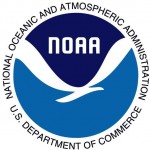Phytoplankton Monitoring Network
The Phytoplankton Monitoring Network (PMN) is a community-based network of volunteers that assist NOAA scientists in monitoring marine and freshwater phytoplankton and harmful algal blooms (HABs). The program was created by NOAA’s National Centers for Coastal Ocean Science (NCCOS) in 2001. Since its inception, PMN has grown to include more than 600 volunteers across 36 U.S. states and territories. PMN uses trained volunteers to collect samples, identify different species of phytoplankton using digital microscopy, and report their data to NOAA scientists using an online database. NOAA uses this information to support HAB forecasts and assist state and tribal managers in mitigating the effects of HABs. More recently, PMN has established a new program – Aquaculture PMN (AQPMN) – focused on providing aquaculture farmers and fish hatcheries with the tools to monitor for phytoplankton known to reduce growth or kill shellfish and finfish species. This data will help provide farms with advance warning of high levels of dangerous phytoplankton and minimize economic losses to the aquaculture industry.
Project URL: https://coastalscience.noaa.gov/monitoring-and-assessments/pmn/
Geographic Scope: National
Project Status: Active
Participation Tasks:
Start Date: 2001
Project Contact: steve.morton@noaa.gov
Federal Government Sponsor:

Other Federal Government Sponsor:
Fields of Science: Animals, Biology, Chemistry, Climate and weather, Ecology and environment, Nature and outdoors, Ocean/water and marine
Intended Outcomes: Programmatic, Research development, Civic and community, Individual learning,

